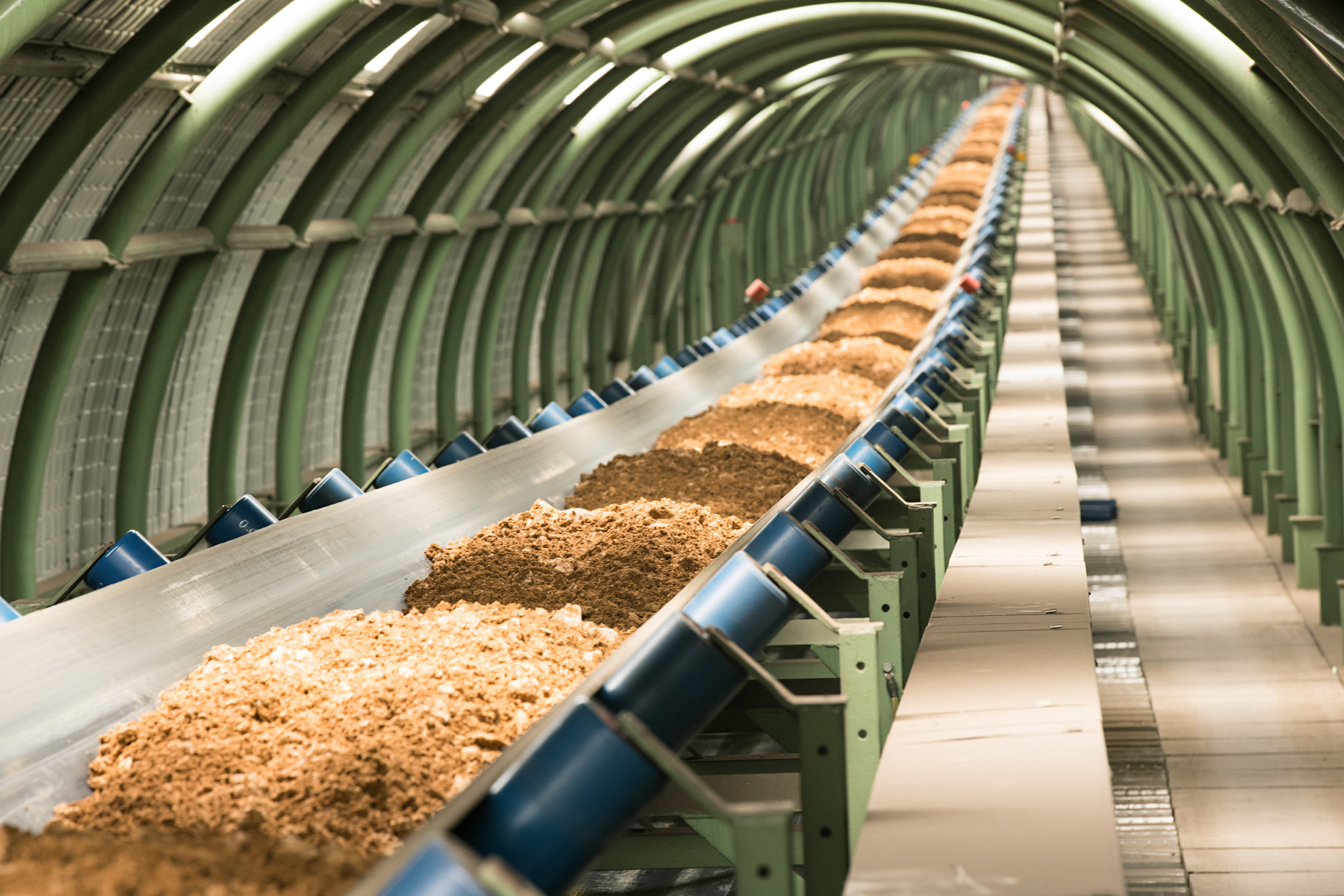BEUMER Group thinks more miners should include the use of conveyor belts for ore transport in their mine development calculations, as, on many occasions, the investment can pay off in the short- to medium-term.
Raw materials must be transported from the mine to a factory or port, often over uneven ground and across populated areas. To do this, companies often choose trucks for transportation.
As an alternative, system suppliers including BEUMER Group offer open troughed belt conveyors or closed pipe conveyors. These solutions are more environmentally friendly and can be considerably more economical, according to BEUMER.
“Deciding if the investment is worthwhile depends on several factors,” the company said, adding that a feasibility study and cost comparison can help with the decision.
Richard Munson, who manages the development and sales of conveying systems for the energy, cement and mining industries and port terminals, says a positive investment outcome depends on the application at hand, adding: “Companies should carry out a profitability evaluation beforehand.”
Whether it is calculating the net present value, or carrying out a cashflow analysis, the comparison needs to factor in the topography, length and power consumption associated with running the conveyor systems.
BEUMER Group says costs for conventional conveying systems average between €1,000 ($1,084) and €3,000 per metre. “More costs are added for the construction, supply and the mechanical and electrical installation,” it said.
Complex construction work is also often necessary, which makes the initial investment in a conveying system fairly high, the company says.
Munson says the operating costs are, however, considerably lower than the use of trucks.
The costs for the vehicles also include the labour input, vehicle depreciation, maintenance, repair, fuel and street maintenance, for example. And, oftentimes there are additional, more difficult to identify charges.”
To operate a conventional conveying system, the typical costs for transporting one tonne of material amounts to €0.20, with trucks the costs are roughly €3, according to BEUMER Group.
“The biggest variable for the vehicles is the number of trips per hour,” Munson said. “In the case of short and direct routes, this ranks better than for long routes, where detours are necessary to get to the destination.”
Troughed belt conveyors and closed pipe conveyors lead directly to the destination, on the other hand. They can also be adapted to the specific surroundings, with an essential feature of the technology being the ability to handle horizontal and vertical curves. Angles of inclination of up to 15° are possible, depending on the characteristics of the material to be transported and the topography, with lengths greater than 12 km.
“Due to their ability to navigate curves, considerably fewer and − in some cases no − transfer towers are required,” BEUMER Group said. “This results in substantial cost savings for the customer and the system continuously transports the material even over challenging ascending and descending sections, rivers or street crossings.”
Using BEUMER calculation programs, the experts precisely calculate the static and dynamic tractive forces of the belt during the system development phase. This is the prerequisite for the safe dimensioning of the curves, according to the company.
For trucks, more cost factors must be accounted for that are not as easy to estimate; control measures against dust and rain drainage, for example. These variables are eliminated completely in the case of closed pipe conveyors.
Munson said: “If circa-1 Mt of bulk material are moved per year, then the gross differential value between trucks and a conveyor, using the above mentioned costs of the material that needs to be conveyed, is at €2.8 million.”
According to Munson, such a conveying system pays for itself after only a few years.
The electric drives and low-energy belts also have a positive effect on the operating costs of the belt conveying systems. They are also better for the environment compared with truck transport.
“Therefore, especially in these times of climate change and increasing greenhouse gas emissions, they are considered a more sustainable option,” BEUMER Group said. “The motors used for these systems are usually adjustable, which permits the loads to be optimally distributed on the drive units under various operating conditions. If the belt conveying system conveys downhill, the system works in regenerative operation. The generated electric energy is fed to the mains by a regenerative feedback unit. This way the owners can further reduce the operational costs of the entire system.”
Depending on the project, belt conveying systems require up to 90% less primary energy compared with truck transport, Munson says, referencing a project implemented for China cement manufacturer Sichuan Yadong Cement. Here, trucks operated with diesel fuel required a specific primary energy of 11.4 kWh for each tonne of transported material at the site. The belt conveying system built later on required only 1.44 kWh.
“If, as in this case, 7.5 Mt of raw material are transported annually, the user can save a total of 74 million kWh/y with the belt conveyor,” BEUMER Group said. “This corresponds to an energy consumption of more than 20,000 single-family houses. Solely by saving diesel fuel, the operational costs of the company are reduced by more than €5.5 million/y.”
Munson concluded: “In the end, the operator needs to consider the total costs per tonne over time when evaluating both transport options.”
The operational costs for a belt conveyor are considerably lower than for a truck, but the decisive factor is how much material is transported during the project term and the environmental concerns at play with the project.











